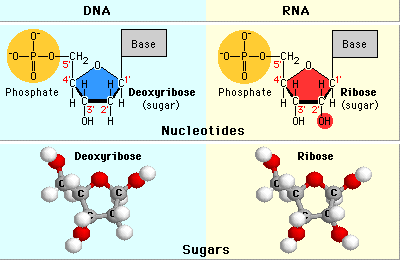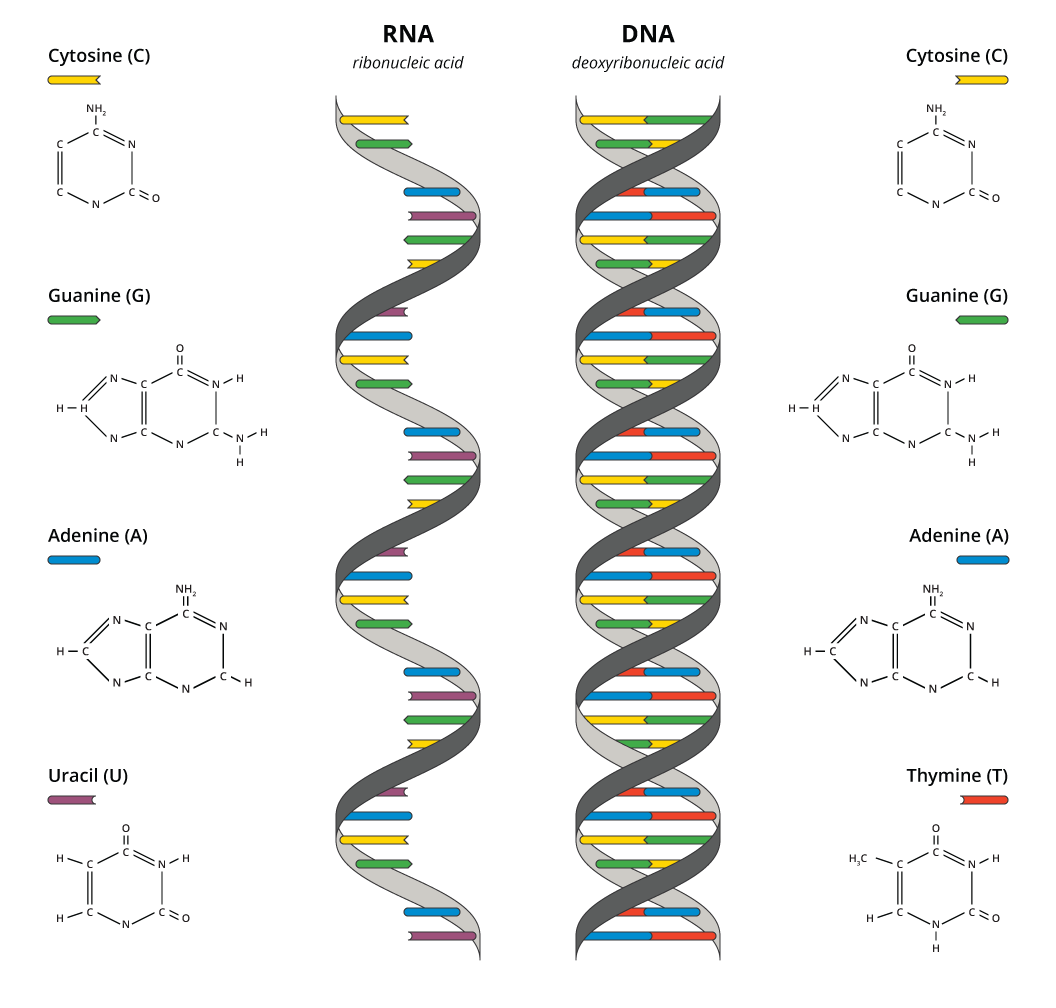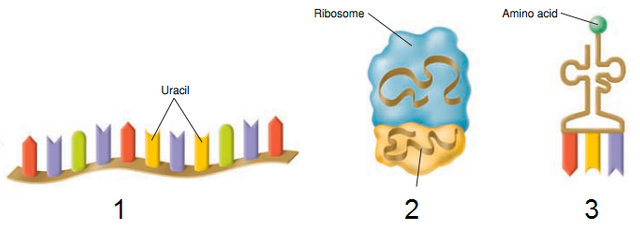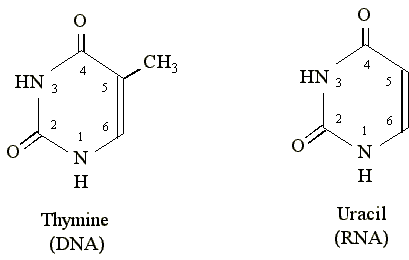The differences between DNA and RNA are the following:
Structure
The acronym DNA means deoxyribonucleic acid; Here is one of the first differences, in its structure. The carbohydrate is a ribose that is deoxygenated (it lost its OH group).
The acronym RNA means ribonucleic acid, in its structure the carbohydrate is a ribose in normal state.

Shape
The DNA is forming a double helical chain, that is to say in the form of a helix, of great length. In addition, the DNA is super rolled on itself (with the help of proteins) to form structures called chromosomes, during cell division, the rest of the time is multiplying.
The RNA is in the form of a single chain, shorter than the DNA. Its curl is given to form and merge with itself to form Ribosomes (structures responsible for translating mRNA to proteins.) In bacteria it is in the form of circular DNA.

Function
DNA: is the one that has fewer functions, but certainly one of the most important. Safe and stable storage of genetic material, intended for inheritance in parents. Chromosome structures allow you to separate and recombine with others stably.
Its other function is to self-replicate within the nucleus; This is transcribed in RNA and through an enzyme (reverse transcriptase) it is converted back into DNA. This DNA polymerase uses the template of an RNA to generate DNA.
RNA: this is the one that fulfills the greatest number of functions.
- Messenger RNA (mRNA): is the transcript in the nucleus from DNA, and goes to the cytosol (with protective cover to avoid being degraded) it goes to the ribosomes where it will be translated into a specific protein.
- Ribosomal RNA (rRNA): this RNA is combined with proteins to form the subunits that make up the ribosomes. This RNA binds to the messenger to begin the translation of the protein.
- Transfer RNA (tRNA): it is much shorter and is bound to specific amino acids or growing polypeptides, transferring them to the ribosome.

Location
DNA is only found inside the nucleus of the cell (eukaryotic) and inside the mitochondria. In Prokaryotes it is found in a circular form in the cytosol.
RNA is found inside the nucleus of the cell and in the cytosol. In bacteria only in the cytosol, since these do not have a nucleus.
Base Pair
The DNA is formed by the following base pairs
Pyrimidines: Cytokines and Thymines
Purines: Guaninas and Adeninas
Follow the pairing sequence of A-T and C-G

The RNA is very similar only that Thymine is replaced by a Uracil, a molecule of great similarity except that it lacks the methyl group. In the same way, uracil joins with adenine
